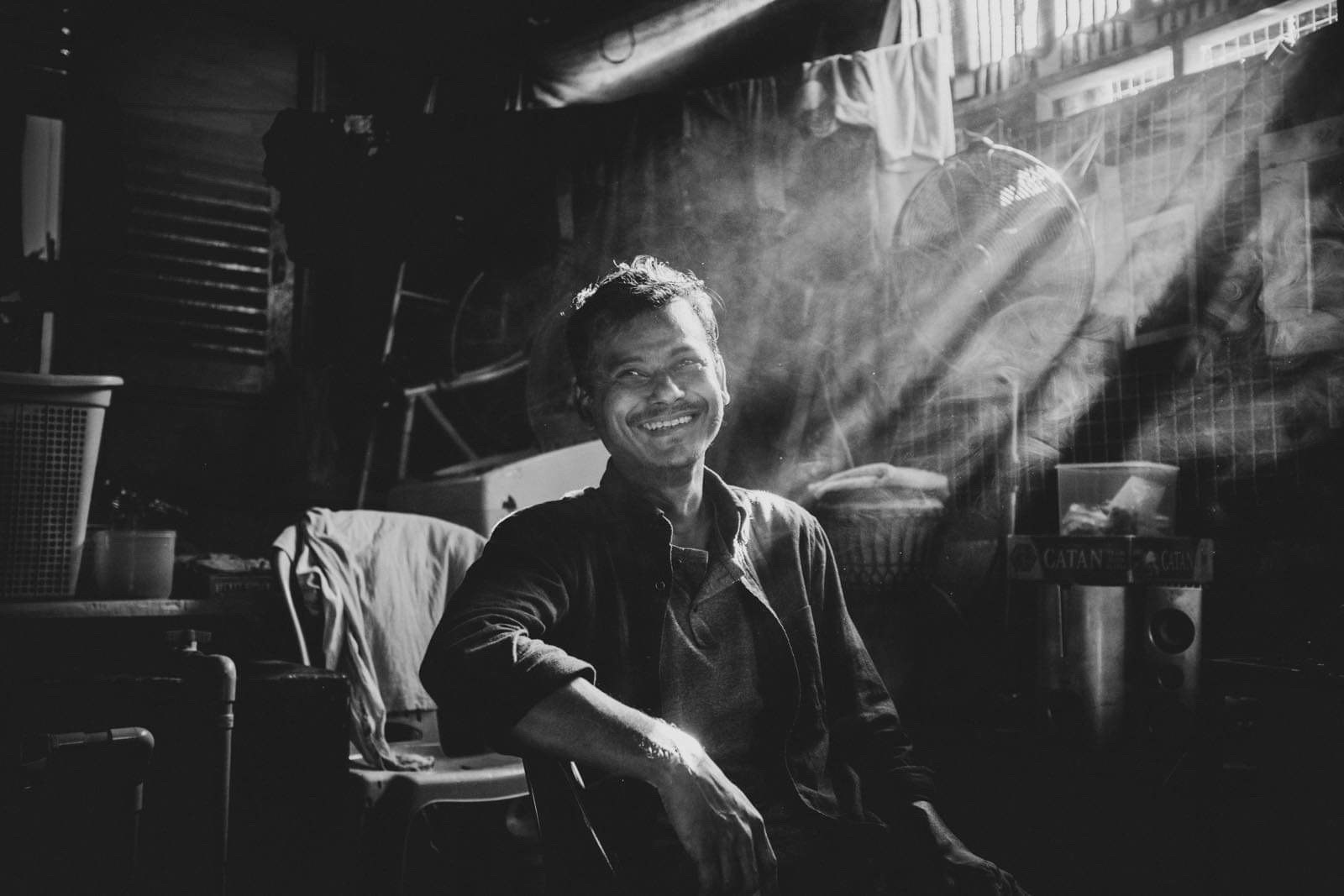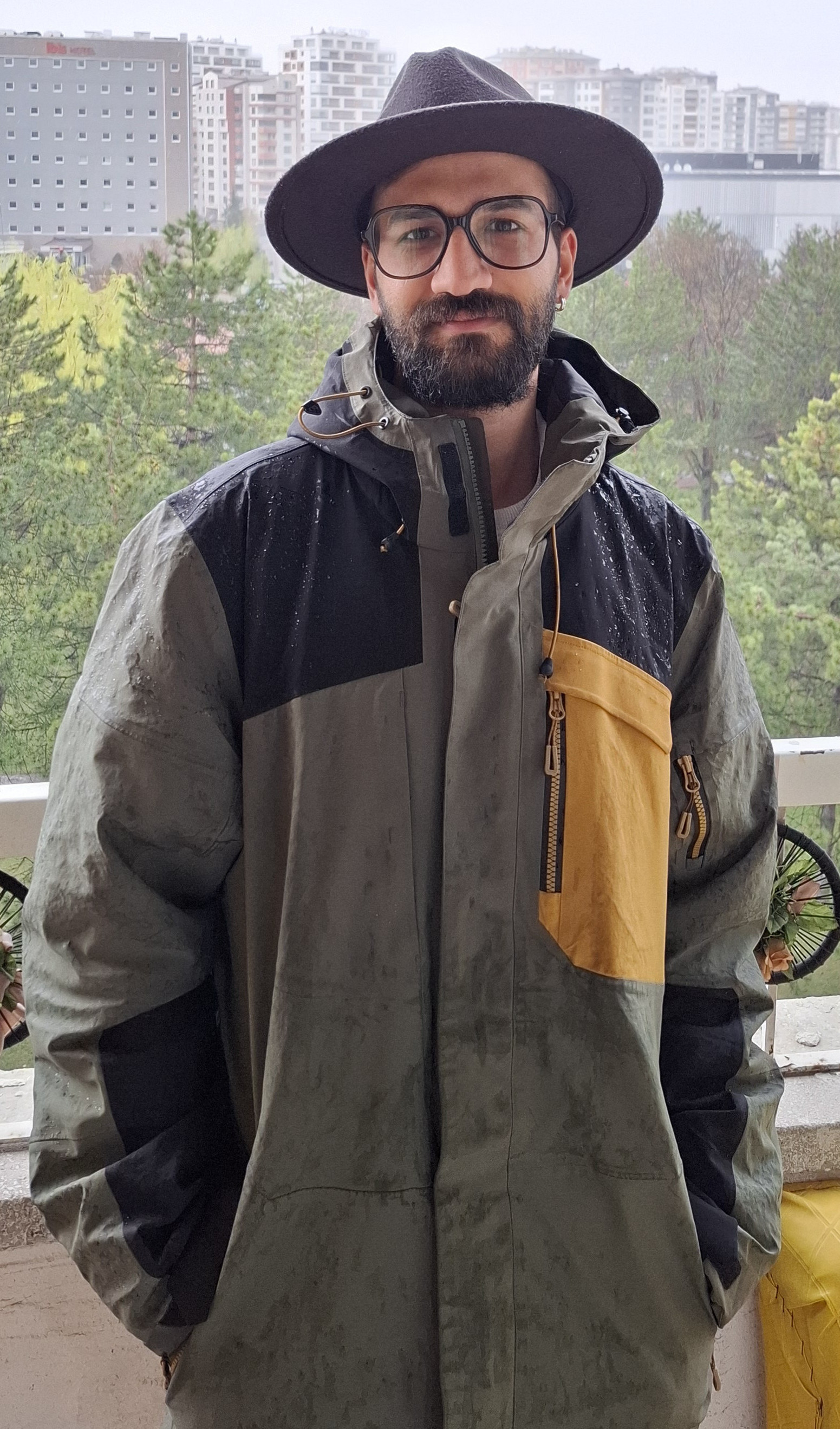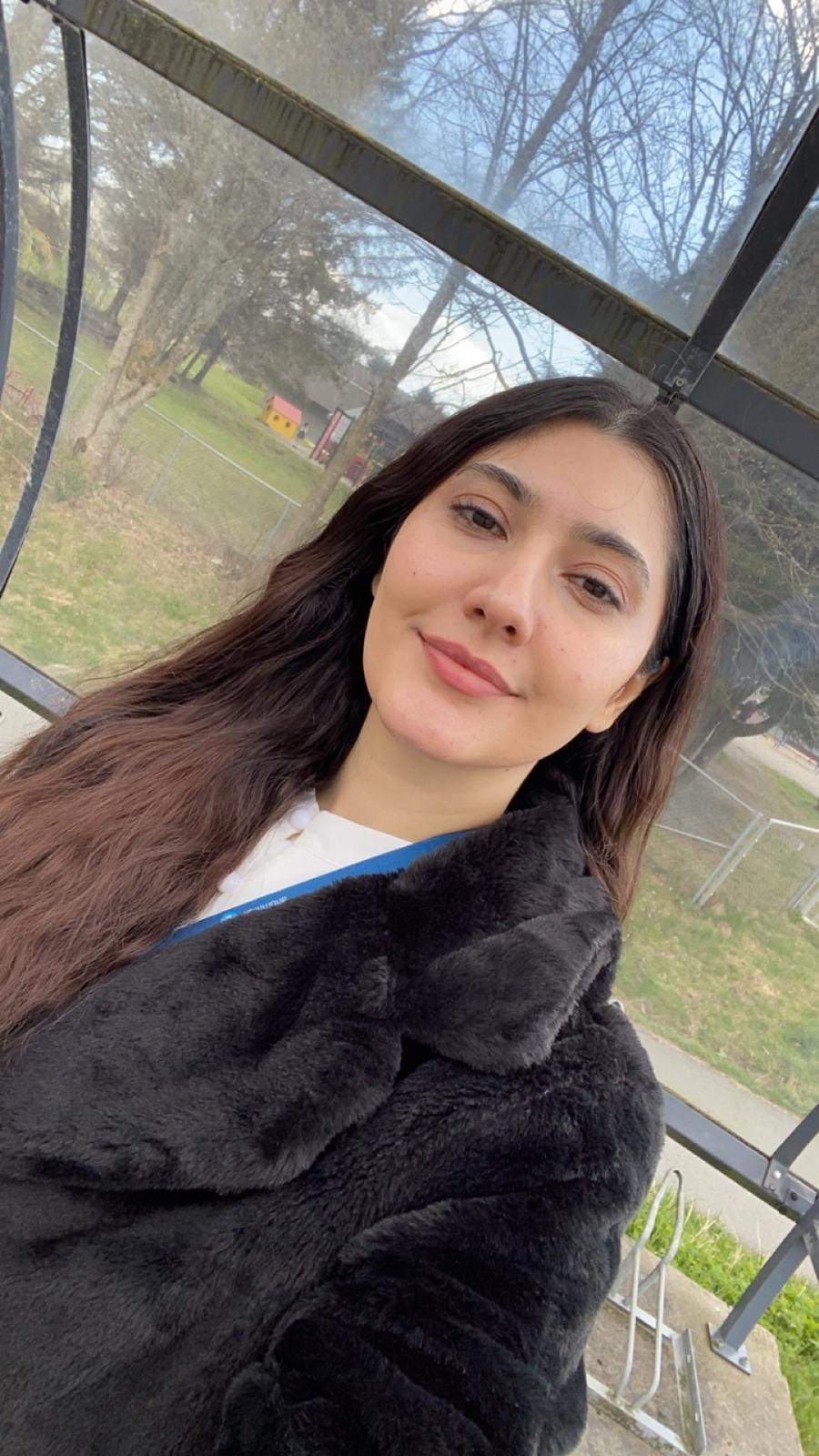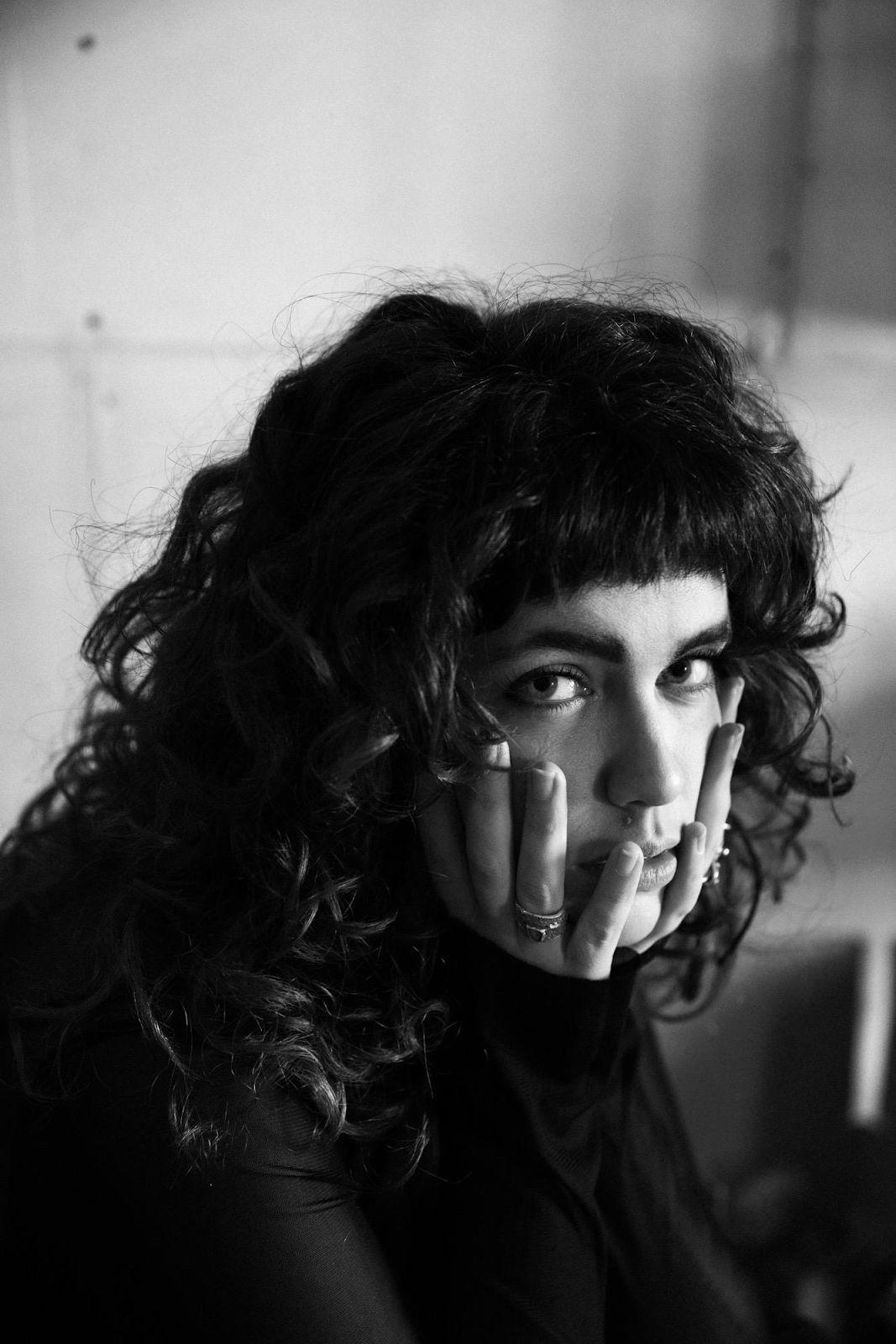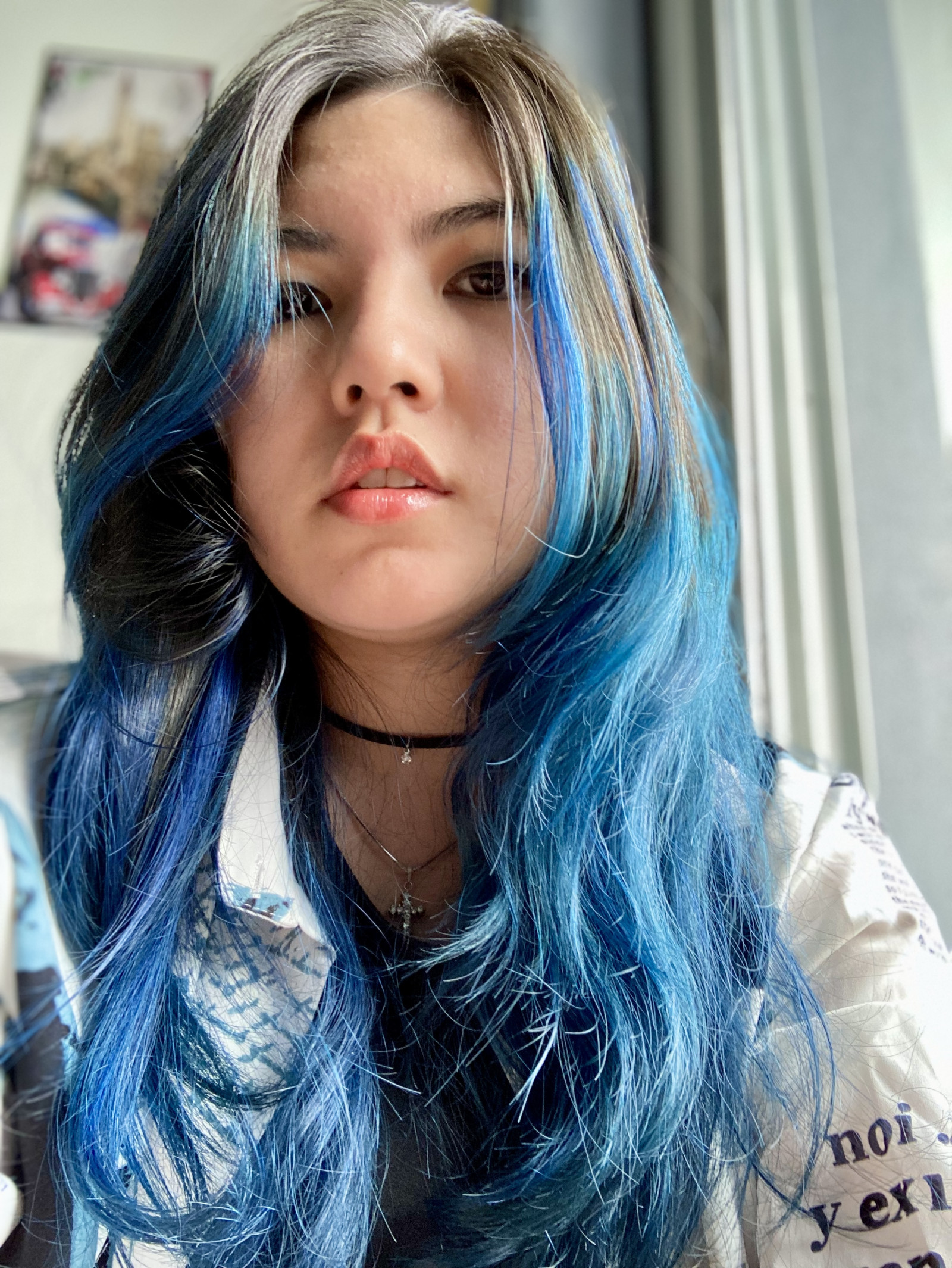The love that is not all pain is not all love.
Antonio Porchia
She has been sitting at her table for a while, at least long enough to finish a cigarette. She takes the last draw on the cigarette and snuffs it out into the ashtray which is full of stubs. This is her new habit now, smoking two cigarettes a day, one in the afternoon and another before bed. Until five years ago, she never touched them. As she is looking at the ashtray, a woman, the size of a cigarette and made of ash, springs up from among the stubs. The ash woman bears resemblance to her mother. Her body is pale grey but her eyes, a pair of embers, red and smoldering. “Just get on with it, girl. Take the box and open it. One way or another, you have to face your own past. Please don’t tell me age has turned you sentimental and scared,” says her ash mother. She knows what box the ash woman was referring to. It is the very reason why she has been sitting there, sad and confused. The box holds the memories she doesn’t want to be reminded of, and that’s why she put it away and never opened it for decades. However, she has been thinking about it since she woke up this morning, so much so at one point she even thought of opening it. Another ash woman appears out of the ashtray, again with some resemblance to her mother. She stands next to the previous ash woman and says, “Girl, leave the past to the past. Just let it all go. Everyone makes mistakes, makes decisions that they would regret. Leave the box alone.” The second ash mother wears a string of tiny ash beads around her neck and she has pale blue eyes. She doesn’t know what to say to the ash women, so she just keeps staring at them, and they stare back. Then all of a sudden, she takes a deep breath and blows the ash mothers scattering them into fine grey particles.
She has no other option but to submit to the words of the first ash woman because she herself has wanted to open the box. It’s just that she dreads encountering memories and feelings the box might summon up. She also realizes it is the right time to reflect on the things she has exiled from her thoughts for years. She tells herself she must accept the fact that she has made bad decisions in the past. She takes the stairs to the attic of her two-storied wooden house. The heat of the late afternoon is unbearable especially in that low-ceilinged attic. She doesn’t want to be there for long, so she ducks her head and hurries to the cast-iron trunk at the right corner of the room. She opens the trunk which isn’t locked. There inside are some old clothes, some books, and a small box made from pine. She takes the box, closes the trunk, and leaves the attic, her weary face covered in sweat.
She places the box on the table after moving the ashtray to the top of the table to make more space. Then she reaches for her cigarettes, takes one, and almost lights it. She puts it back into the pack, and shifts her attention to the box covered by a thin layer of dust. She blows away the dust and lifts up the small copper hinge with trembling hands. There are some items in the box including a dozen or more of neatly stacked photographs, one of which shows a family – her parents and herself. They went to a studio and took this black-and-white photograph when she was little. Another one is of her mother taken on the day she turned 60. Looking at this photograph, she remembers that she is also an old woman now, 65 years old to be exact, and in fairness, she looks a lot like her mother. Her chest aches a little. Whenever she thinks about her mother, she always becomes overcome with bitterness and a stinging pain. As far as she can recall, there was always a layer of standoffishness between her and her mother. She is partly to blame; her disposition made the entire situation worse. Since her childhood, she has always kept to herself. She didn’t like to spend time with her parents, nor did she ask them to buy her things. She didn’t have a lot of friends either. There were two things that she religiously did though: growing plants and reading books – the kinds of hobbies that one can do alone. Her father was a traveling businessman. He took short and long trips frequently and when he was home, he was busy preparing for the next one. Seeds were the only concrete form of communication between her and her father. He brought seeds that she wanted to grow when he returned from his trips. Her mother worked as a senior clerk at a government office. She had expectations for her, and tried to assert authority over her when she deemed it necessary. The older she became, the wider the chasm between her and her mother grew. In his later years, her father could no longer travel as frequently and as intensely as before, so the income dropped significantly. He set up a sundry shop at the front of the house that generated a small yet regular income.
After she graduated from high school with good grades, her mother hoped she would go on to study medicine, but she enrolled at the university of education and became a schoolteacher. There was a big fight with her mother regarding her decision. After that, they stopped talking for weeks. Her first assignment as a teacher was to go and teach at a school in Myitkyina, a town in the northern part of the country and a very long distance from Yangon where her family lived. She accepted the assignment. Both she and her mother knew that this would end what had been a relationship of unpleasant silence and unspoken words of pain and love. When she bid her farewell, her mother didn’t look at her. She turned her face away and wept quietly. Then she whispered, “Since you were a child, I knew this day would come.” She didn’t say anything back to her mother. From a very young age, she knew her mother had already decided she was a selfish girl. It wasn’t only her mother who thought of her that way. People in her neighborhood and at school also thought the same way. When her father died, she was a principal at a school in Katha, a town far up in the middle part of the country. By that time, she had already worked at schools in various towns and cities, and because of her hard work and dedication, she got promoted at a steady rate. At every school she had taught or overseen, She had the sort of reputation reserved for women who work relentlessly and hold to unshakable principles – and for being cold-hearted and unsociable. On the day she received the news of her father’s passing, she was busy at school making arrangements for the visit of the education minister. The minister’s visit was an important occasion that everyone at school and all the townspeople were eagerly anticipating because he would bring with him the funds for a new building on her school grounds. When the minister came the next day, she welcomed him herself and sat with him to discuss the construction of the new building. She managed to return in time for the funeral ceremony, held on the third day after her father’s death. Her mother refused to talk to her but asked this question: “Have you cried for your father?” She didn’t say anything back. After the funeral, she went back to her school, and her mother went to stay at a meditation center. Over the last three years of her mother’s life, she made a few phone calls to say hello and visited three times, all brief and awkward. When her mother died, she went back home again and organized the funeral. After that, she never left her school and devoted all her time to the school’s affairs. She decided not to sell her parents’ house. After several more years at the same school, she retired and moved back to Yangon. Since then, she has been living in the old house her parents left her.
She continues looking at the photographs.
There’s another photograph that draws her attention. She looks at it for two intense minutes. She then flips it to see if there’s any date marked on the back. There is written, “With Mee Mee, Ko Ko, Zin Mar, and Lu Moe [1983, April].” The photograph shows a wooden round table on short legs with food and drinks on it and five people are sitting around it. Every one of them is looking at the camera and laughing at the same time except Ko Ko who was seated next to her. He always seemed sheepish in front of a camera. Ko Ko is Mee Mee’s older brother. She and Mee Mee met at the university of education and became friends very quickly. They kept in touch when they became teachers at different schools. She met Ko Ko when she visited Mee Mee’s house and everything that happened between them later on still hurts her today like having a thorn under her skin for all eternity. Everyone thought she was to blame for that one too, which she accepted. She also blamed and tormented herself for so many years. But now she just feels numb most of the time. She adored him. He was the only man she had ever slept with. But she was too indecisive, too reserved when it came to their relationship. His job was importing luxury products such as television sets, boom boxes, cars, and refrigerators. He loved her and wanted to marry her. He liked spending time with her more than anything. She also wanted to be with him. But she wasn’t sure she would be able to make him happy. She couldn’t recall anyone she had made happy including her parents. She was convinced he would leave her sooner or later after they married. So she cut off all the communication with him. In the beginning, she spoke to Mee Mee once in a while but when Mee Mee started bringing up about her brother, she also cut off contact with Mee Mee. It coincided with her moving to a new school, so the cutting was easy.
- -
There is a bundle of unsent letters underneath the photographs, all enveloped and addressed. They were meant for her Ko Ko.
- -
She carefully puts back the photographs and the letters in the box, takes the box up to the attic, and places it in the trunk. Then she goes downstairs, walks into the kitchen, and cries.
- -
When she wakes up the next morning, she feels fresh and even a little cheerful. She goes to the neighborhood market to buy food. She also buys a bunch of dancing lady ginger flowers which she offers at the family’s Buddha shrine when she gets back home. Then she sits at her table and picks up a book that she’s been reading over the past few days. Sometimes, she gazes out of the window and she smokes a cigarette. She then takes a shower, eats her lunch, and gets herself ready to go to the city center. She thinks about going to a bookshop and getting some snacks afterwards. “Maybe I will watch a movie if they are showing something interesting,” she says to herself. From her house, it’s a one-hour bus ride to the city centre. First, she walks along a narrow lane for about three minutes. Then she turns right, passes the Agricultural Department building, reaches the main road, and crosses it. She continues on the right side for another three minutes until she arrives at the bus stop.
After getting off the bus, she goes straight to a restaurant and orders herself a glass of cold tamarind juice. She then walks to the bookshop and spends some time there browsing the books. She buys three books that she thinks she likes to read. Then she goes to the cinema to check out what movie is on. When she gets there, she sees a movie poster bold, colorful, and large. It is a Bollywood movie, and it features Salman Khan, one of her favorites. She has more than one hour until showtime. She decides to go to a Chinese restaurant for a bowl of pork noodles. On the other side of the street from the noodle shop, there is a man selling puppies. This isn’t new to her; she has seen people selling kittens and puppies on the sidewalks before. The man has four puppies, and one of them is quite lovely. It has beautiful fur with a mixture of grey and golden yellow. But another puppy draws her attention most – a black puppy with gleaming eyes and a pitiful face. Sticking out its tongue and making a cute face, the puppy looks at the passersby. She finishes her noodles and walks across the street to where the puppies are. When she gently strokes the head of the black puppy, he closes his eyes and enjoys the touch of her hands. “It must be three or four months old”, she says to herself. “How much do you want for this puppy?” she asks the seller.
She doesn’t go to see the movie. But instead, she buys a basket in which she puts the dog, and heads for the train station. If she takes the bus with the dog, the driver may make a fuss about it. “The train is better,” she says to herself. Behind her house lies a stretch of fields. Few people live there—only two or three families of slum dwellers who practice small-scale farming beside their modest huts. The fields also serve as a playground for local children and young people, who play sports and fly kites. Herders from the area bring their buffaloes, cows, and goats, letting them graze in the grass. Just beyond this patch of fields stands the railway station where she gets off. She walks past the fields carrying a basket with a little dog in it. On arriving at her place, she gives water to the dog. Then she goes into the kitchen and cooks some rice. She takes a dried snakehead fish and puts it on the fire. When the fish is well roasted, she pours a bit of cooking oil on the fish and eats it with hot rice. She also gives some to the dog. After the dinner, she goes upstairs and sits at her table. She reads a little and smokes a cigarette. Before she goes to bed, she makes a quick check on the dog. It has fallen asleep on the thick and soft fabric of the doormat.
- -
Months pass. The black dog has grown bigger. When he is almost one year old, he starts going out, doing his rounds in the neighborhood. She doesn’t stop him because she is aware of how very fond dogs are of wandering about. There are times when the dog comes back injured and soaked in blood. She always tends to the wounds without any complaint. In fact, she enjoys it. Spending time with her dog brings her a kind of happiness and lightness. She feels especially pleased when the dog accompanies her on her walks. Sometimes she sees him from her upstairs window, chasing the ball with children in the fields. In those moments, he looks so excited and free. There are things she has to do for the dog on a regular basis, buying pork bones and delousing for instance. At first, she delouses the dog by finding and killing the parasites with her own hands. It is hard work; it makes her back ache and her neck stiff. But it is also rewarding because it feels very good to see her dog relieved of its niggling itch. She knows that bathing is a better way to clean him up, and it isn’t like she hasn’t tried doing that. Her dog doesn’t like it. The first time she did it, he ran away and didn’t come back for his dinner. She has now resorted to rubbing his body with a wet cloth as much as possible especially when he is asleep. She also does the delousing when he is sleeping. At first, she doesn’t know the nature of the lice, so it is a challenge. Let’s say she finds and kills all of them today, but the next day they are back in the dog’s fur. It takes some time until she notices tiny clusters of even tinier dark grains. They are the eggs. When she crushes them between her fingers, they become red and flatten. Since that discovery, the delousing routine has become easier. Better yet, she finds a pet clinic where she can get flea drops for dogs.
- -
The monsoon passes and the rainfalls stop, giving way to cooler breezes and a colder climate.
One morning, the black dog goes out and when he comes back a few hours later, he sits on the doormat and starts scratching and biting into his fur with irritation and feverishness. When she looks at where he’s been biting, she sees lice. “Where did you go to get these lice?” she remonstrates. She gets the flea drops and puts some into his fur on the neck. The dog lies on the mat all day and he doesn’t touch his food at all. In the evening, he goes out of the house but a few minutes later, he comes back in and lies on the mat again. She brings the food bowl to him and quietly observes his condition. “Something’s wrong. Maybe stomach pain,” she says to herself. When she gently strokes the fur, something moves under her palm. She takes a close look and finds a louse as large as an adult’s thumb nail. The parasite moves very quickly and vanishes into the neck hair. She tries to track it down but to no avail. She looks everywhere on the body of the dog, but the parasite can’t be found. She feels bad for her dog who doesn’t resist her searching hands. Maybe it isn’t a louse. Maybe it is a different kind of insect that has flown off. That night when she’s fast asleep, she wakes up to the noise coming from downstairs. She instantly realizes it is her dog whimpering and growling. She runs downstairs and sees the dog in a bad state: the tongue hanging out, the eyes half-shut and the mouth foaming. She doesn’t know what to do, so she keeps stroking his neck hoping that will comfort him a little. Fortunately, after an hour or so, the dog quiets down and falls asleep. Relieved, she goes to bed again.
When she wakes up the next morning, the first thing she does is check on her dog. The dog is still fast asleep. Then she notices the food bowl is empty. “What a relief! At least it’s some progress,” she tells herself. She observes that her dog has grown so big during all these years. That pleases her. As she continues to observe, she spots something moving on the dog’s stomach, something like a knob. Then she realizes the thing isn’t moving on the skin but under it. “Oh Lord Buddha,” she exclaims in fright. The moving ball is bigger than a marble but smaller than a doorknob. She starts to feel very worried. “What’s that thing? What’s moving inside my dog?” she cries. She thinks about taking the dog to a pet doctor. There’s no pet clinic in her neighborhood, but if she takes a bus for half an hour, she can get to a pet clinic located near a market junction, the same clinic where she buys the flea drops. On that day, she has an appointment with a builder. For weeks, she has been thinking of knocking down the old house and building a one-storied brick house. Now that she’s getting old, it’s becoming more and more difficult for her to go up and down the stairs without hurting her knees or legs. She has been saving up a portion of her income for a few decades, which she has decided to spend on the new house. There’s another reason for her wanting a new house. Compared to the old version of herself, she has become happier over the past few years, and it is her black dog who has put a smile on her face. He’s also good company for her. In other words, the new found happiness inspires her to make some changes to her old way of life. The builder lives in another township, so if she goes to see him, she'll spend the entire day just travelling there and back. She decides, rather reluctantly, to take the dog to the pet doctor the next day.
- -
She feels heavy-hearted throughout the entire trip to the builder’s house. What she saw before leaving has made her feel worse. She washed the food bowl, put some food in it, and placed it near the dog. Then she refilled the water bowl. When she tried to touch the dog’s head, he suddenly raised his head and snapped at her hand which she had to withdraw fast. The dog was growling at her, his eyes red with anger. His body, now bigger than ever, made writhing movements like something rubbery. After a few minutes, he closed his eyes and fell asleep again. Trying to be as noiseless as possible, she got up and went out leaving the main door ajar, so the dog could wander in the yard when he woke up. But she made sure she locked the gate. She doesn’t know what is happening to her dog. She feels very confused and very sad.
The meeting with the builder goes really well. He gives her a figure for the estimated cost which is a little over the amount she wants to spend. But she can cover it, so it’s no longer a problem for her. But she tells the builder to wait for her confirmation before they sign the contract. She can’t fully concentrate on the house at the moment; she’s very worried about her dog. When she gets back home, she doesn’t see the dog on the mat. She looks everywhere on the ground floor. She finally finds him under the cupboard in the kitchen. She squats down and looks. The dog looks back at her with a pair of stony red eyes. When she tries to reach his paws, he shows his teeth and snarls at her. “I will take you to the pet doctor first thing tomorrow,” she tells him.
The next morning, she runs downstairs and looks for her dog. She can’t find him. When she looks in the yard, she sees the dog facing the gate and growling a bit mildly. This surprises her. She knows that her dog likes to take his morning dump outside of the house, and he always uses the hole in the fence around the back which he dug himself. Now instead of using that hole, he’s standing at the gate. That’s what surprises her. She tries to go near the dog, and notices that the dog has got extremely fat overnight, and again something is moving under his skin. The knob has also got bigger. It is now the size of a pomelo. Just then, the dog’s body starts to twist as if he is having a bad itch, and his body starts to shake, shedding hair in clumps. He now looks like a huge mass of shiny black leather. The knob moves about his body, a swell here and a bulge there. The sight of the transformation scares her. She quickly opens the gate, and the black dog takes off. She decides to wait for him at the gate because he might come back in a few minutes. An hour passes and yet the dog hasn’t come home. She starts doing the chores. She washes her clothes and hangs them up to dry on a line in the yard. Then she sees a boy running to her. Panting, he says, “Your dog is attacking my cows! In the fields!” With that, he rushes off. She knows that boy. His parents breed cows. She runs after him. There are three or four people in the fields. She can hear them shouting and swearing. A few meters away from them are a group of cows running scared, and among them there is a fat cow and on its right thigh, a dark thing clinging on fiercely and biting into the flesh at the same time. The cow tries to shake it off, but it sticks fast. She instantly realizes that is her black dog but he looks more like a large blood-filled insect. A young man gives him a firm poke with the tip of a bamboo, but he keeps clinging on and keeps biting into the cow’s thigh. The young man gives another hit with the bamboo, but this time the tip of the bamboo hits the dog’s head and he falls to the ground. The dog, out of extreme rage, runs to the young man and bites his arm. Amid the screams, the cow breeder arrives at the scene with a Zip gun. He takes a shot and the bullet grazes the dog’s neck. Her dog runs off beyond the fields. The cow breeder and a few men go after him. “We have to kill him,” someone urges. She looks at the end of the fields where the dog disappeared, tears streaming down her cheeks.
They never catch the dog. He never comes back home either. But at night when she sits at her table looking out of the window, she sometimes sees two red eyes looking in her direction from the far end of the fields – two red dots in total darkness. She knows that’s her black dog. But after several months, the red eyes disappear. After twelve months and a few days, she adopts a cat. She isn’t particularly fond of cats, but she likes their indifference. Her cat sometimes approaches her and rubs himself against her feet, but mostly he keeps to himself. She has read somewhere about how apathetic cats can be. The article claims cats always keep their eyes shut while eating because they don’t want to remember the faces of those who feed them. That’s not a problem for her. A little distance will be good for both of them. One morning she remembers something that she has to do. She gets on a bus that will take her to the builder. She believes it's the right time to build herself a one-storied brick house.
Translated from the Burmese by the author and edited by Aung Phyoe

